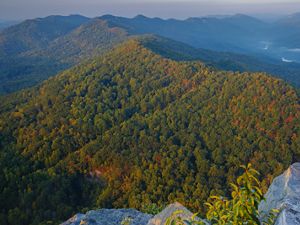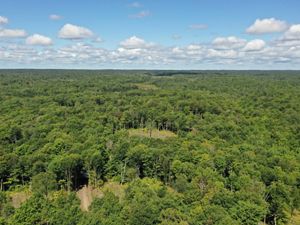Critter Crossings: Helping Wildlife Migrate in New York
A creative new way to help animals move in the Adirondacks and beyond.
As more roads and buildings spring up where animals used to roam freely, it becomes increasingly difficult for these creatures to navigate from place to place. In the Adirondacks, we’re partnering with the New York State Department of Transportation to test a new walkway for wildlife as one way to overcome this problem.
On the Move
Underneath New York’s roads lay more than one million culverts—drains that connect thousands of stream segments or channel stormwater away from the surface. Culverts are designed to keep roads functioning for motorists as they travel to work, for instance. While roads can have unintended consequences for the movement of wildlife, replacing or retrofitting culverts could allow animals to cross underneath instead of over.
This is important not only for the safety of drivers and wildlife but also because animals need to be able to move across the landscape to find food and hunt. Wildlife often uses rivers and streams as travel corridors because they can find both food and cover there. Many animals must also travel long distances to find shelter or adapt to a changing climate.
Many existing culverts are wide and tall enough to allow aquatic animals to travel safely and water to flow freely. But some land animals won’t cross roads using these tunnels because they are filled with several feet of water or are otherwise difficult to navigate.
Helping Critters Cross
In 2017, The Nature Conservancy and New York State Department of Transportation installed a new structure engineered to help solve this problem for wildlife moving between Tug Hill and the Adirondack Park.
The structure is designed to help bobcats, fishers, martens and other small animals cross safely beneath a busy road. This structure, known as a Critter Crossing, is a steel mesh catwalk and was developed in Montana, where it has proven successful in helping small mammals cross under roads, avoiding cars.
A Scientific Approach
To determine the site of the pilot, our scientists created computer models to identify likely wildlife pathways and potential barriers. And beginning in 2011, Conservancy field technicians began tracking animals in the snow to confirm their travel patterns. Ultimately, the site for the new walkway was chosen because it is within a band of forest across an otherwise open and developed terrain.
The Conservancy, with the help of our partners at the Department of Transportation, is using wildlife cameras to track the effectiveness of this pilot and use the data to inform future projects.
Staying Connected
The Black River Valley, where the pilot is located, is one of nine focus areas of the Staying Connected Initiative, an international partnership of state agencies and conservation organizations working to restore and enhance habitat linkages across an 80-million-acre region of the northeastern U.S. and Canada.
The long-term well-being of this region depends upon a connected landscape, comprised of large core forest blocks with forested corridors between them. A connected landscape safeguards animals and plants from the impacts of climate change, and sustains the livelihoods, activities, and values of the communities nearby. Check out this story map to see how the components of this work fit together in the Black River Valley.
For the Greater Good
Culverts impact people and fish too. At other sites, we are combining ecological data about streams with information from town officials about problem culverts that repeatedly cause flooding or require frequent maintenance. Where our priorities overlap, we are making improvements that benefit everybody. These win-win opportunities are becoming more important as we contend with aging transportation infrastructure and intensifying pressures.
To see why fish-friendly, climate-resilient structures are important to our future, and how partnerships are the key to making them a reality, check out this inspiring video.
You Can Make a Difference for Wildlife Migration
Support our work as we protect more places for wildlife to roam in New York and beyond.



